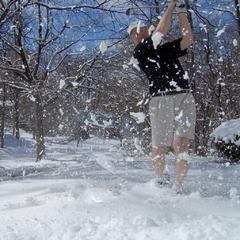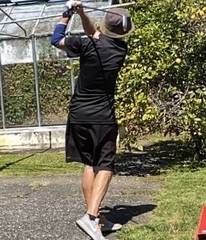A New Beginning - Again
Well, today is the start of new goals and new determination. My Golf goals will not kick in until 2024, after my surgery and after sufficient rehab to begin swinging the club. In 2024 I will sign up for Evolver On-line training and start workin on true swing issues. When that will start will depend on my progress in the rehab after the surgery. Rebah will not even begin until Dec. and I figure I'll not be ready to swing a club until possibly January or February.
For my health goals I am going to get back on the wagon and start excercise and eating right. I'm embarrased to post this but putting goals and facts out there does hold me accountable. Ths morning was my first weigh-in in over a year and I have a new "worst" weight of my live, 286.8. I'm setting a goal to get down to 225 but am not putting a firm date on that at this time. My past weight loss included eating better foods, eating smaller portions (not starving myself but not stufffing myself either), daily cardio excercise (40-60 minutes on treadmill every day) and 3 weight trainings per week. That works and I know it will work but given my foot issues I'm not sure how hard I can push on the cardio and some lower body weight training may be limited. I may need to use the stationary bike more than the treadmill, but I do not like the bike. As for the weights, I should be able to do most excercises but some lower-body may be limited.
My initial goal for the next 2 weeks is "Set the stage" and simply to do some cardio excercise every day (even if only 15 minutes), do 3 weight sessions per week and begin eating better. I am not expecting to "Push hard" but simply to get in the habit of doing the work. I'm not planning on any significant weigth loss but instead look to build up some endurance so I can do more intense workouts in the weeks ahead. My stated goal for July 31st weigh-in is to be 285 or lower, basically to "stop gaining weight".
I'm not sure what a realistic goal is to lose prior to my Oct. 25th surgery but that is just over 14 weeks so maybe target 256 works out to just @ 2 pounds per week on average. Even with limited excercise that should be attainable.
My goal for Dec. 31st will be to NOT gain any weight after my Oct. 25th surgery. For the first 6 weeks after surgery I will not be able to do any cardio (zero weigth allowed on my foot) and that would also limit any weight training to only upeer body. It will then take a little time to rehabe the foot. Thus, simply holding the line by eating right is the goal.
I'll know better where my physcial capabilities are by Jan. 1st and then I will figure out the goal to get the last 31 pounds off. Hopefully after some rehab I may be able to push harder on both the cardio & lower body weigth training in the first part of 2024. I would love to be at the 225 goal by March 31st but that is just a "Wish" at this time. Back in early 2016 I was down to 210 and it would be nice to get there again so depending on how things go I may shoot for 210 later in 2024.










13 Comments
Recommended Comments
Create an account or sign in to comment
You need to be a member in order to leave a comment
Create an account
Sign up for a new account in our community. It's easy!
Register a new accountSign in
Already have an account? Sign in here.
Sign In Now